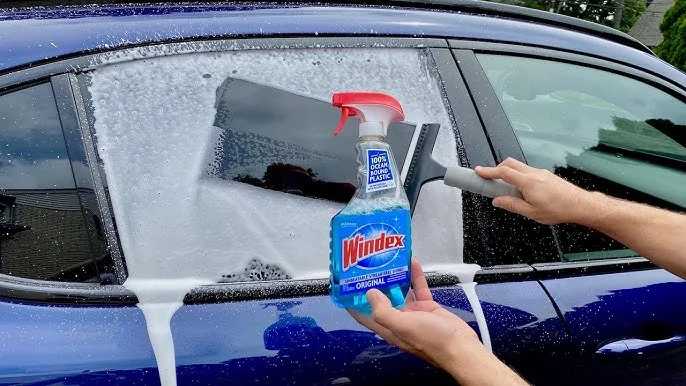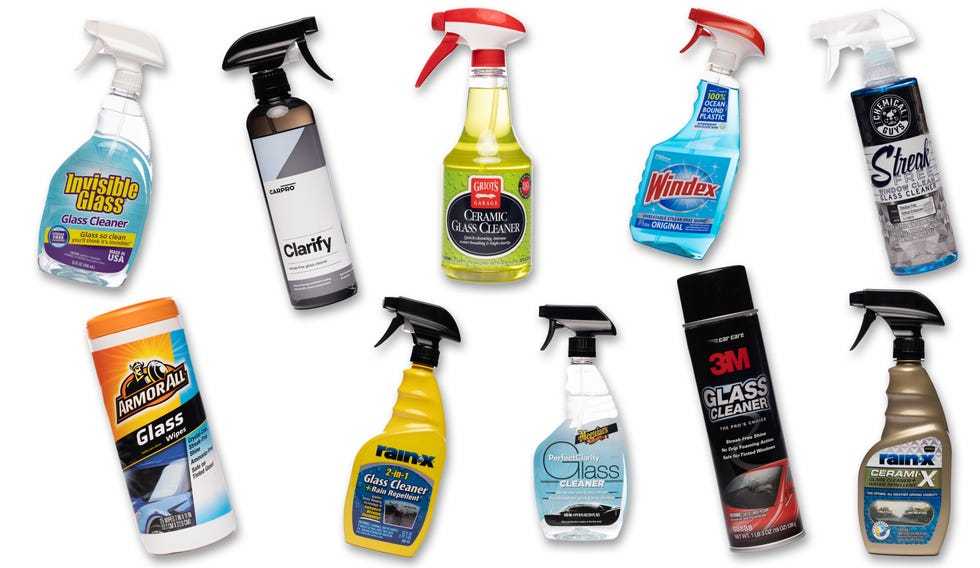To quickly remove scratches from automotive glass, start by cleaning the surface thoroughly, then use a specialized glass scratch remover or a polishing compound, applying it with a soft cloth in circular motions. For deeper scratches, sanding with fine abrasive pads followed by polishing can help restore clarity. Always test on a small area first to avoid further damage.
If your car’s glass has minor scratches, you can often buff them out with a glass polish or a DIY remedy like toothpaste. For deeper marks, professional repair or replacement might be necessary. The key is acting promptly and using the right products to prevent scratches from worsening, ensuring your windshield remains clear and safe to drive.
Scratches on automotive glass can be annoying and distracting, especially when they impair your visibility. Fortunately, many minor scratches can be remedied at home with the right approach and products. Knowing how to address these imperfections quickly can save you money on professional repairs and help maintain your vehicle’s appearance and safety. This guide will walk you through effective steps to remove scratches from your car’s glass, from simple cleaning and polishing techniques to more advanced solutions for deeper marks. Whether you’re dealing with superficial surface scratches or more stubborn blemishes, understanding the proper methods can make your windshield looking like new again.
How to Remove Scratches from Automotive Glass
Understanding Automotive Glass and Scratches
Automotive glass, mainly composed of tempered or laminated safety glass, is designed to withstand impacts and provide clear visibility. Scratches on this glass can occur from various sources such as road debris, improper cleaning tools, or accidental contact with sharp objects. Recognizing the type and depth of the scratch is essential to choose the best removal method.
Superficial scratches only affect the surface layer of the glass, making them easier to polish out. Deep scratches, however, go beyond the surface and might require professional repair or replacement. Identifying the severity of the scratch is the first step in effective removal.
Tools and Materials Needed for Scratch Removal
To effectively remove scratches, gather the following tools and materials:
- Glass polishing compound or toothpaste (preferably non-abrasive)
- Microfiber cloths or soft rags
- Sanding pads or fine-grit sandpaper (if needed for deep scratches)
- Water spray or damp cloth
- Masking tape (for protecting surrounding areas)
- Electric drill with buffing attachment (optional for polishing)
Using the right tools is crucial to avoid causing additional damage during the repair process. Always opt for gentle, non-abrasive products for superficial scratches.
Step-by-Step Process to Remove Light Scratches from Automotive Glass
Removing minor scratches typically involves polishing and smoothing the surface. Follow these steps carefully:
Step 1: Clean the Glass Thoroughly
Start by washing the glass with soap and water to eliminate dirt and debris. Dry it completely with a microfiber cloth to ensure no particles scratch the surface during polishing.
Step 2: Protect the Surrounding Area
Use masking tape around the scratched area to shield trim and paint from accidental damage. This keeps your repairs focused and safe.
Step 3: Apply a Suitable Polishing Compound
Apply a small amount of a glass polishing compound or toothpaste to a microfiber cloth. Use a circular motion to gently buff the scratched area.
Step 4: Polish the Surface
Rub the compound into the scratch for about 30 seconds to a minute. For stubborn scratches, repeat this process several times with fresh compound.
Step 5: Rinse and Dry the Glass
Wipe away excess compound with a damp cloth and rinse with clean water. Dry the glass with a clean microfiber cloth.
Step 6: Inspect the Results
Check if the scratch has diminished. Repeat polishing if necessary. Superficial scratches should become less visible or disappear entirely.
Using Commercial Scratch Removal Products
Many auto stores sell specialized glass scratch repair kits that include polishing compounds and buffing pads. These products are designed to provide professional results at home.
Before use, read the instructions carefully as some products may require specific application techniques or safety precautions. Choose a product suited to the severity of your scratches for the best outcome.
How to Deal with Deep Scratches or Cracks
Deep scratches that penetrate the glass beyond the surface often cannot be smoothed out with polishing alone. For these, consider the following options:
- Seek professional repair services to fill or polish deep scratches
- Replace the windshield or glass if damage is extensive or affects safety
- Use repair kits designed for deep scratches, which often contain resin or filler materials
Safety Tips During Scratch Removal
Performing repairs involves handling glass and chemicals, so safety must be a priority.
- Wear protective gloves and eye protection to avoid cuts or chemical exposure
- Work in a well-ventilated area to avoid inhaling fumes from polishing compounds
- Test products on a small, inconspicuous area first to prevent additional damage
Preventing Future Scratches on Automotive Glass
Prevention is always better than repair. Keep your vehicle’s glass in top condition by following these tips:
- Use soft, non-abrasive cleaning cloths and gentle cleaning solutions
- Avoid using rough or dirty tools when cleaning or wiping the glass
- Park away from bushes, branches, or other objects that could scratch the glass
- Avoid slamming doors or applying excessive pressure when cleaning around the glass
Additional Methods and Considerations
Apart from polishing, some methods can help reduce the visibility of scratches:
Using Ceramic Coatings
Applying a ceramic coating can fill minor scratches and provide a protective barrier against future damage. These coatings are easy to apply and add a glossy finish.
Professional Glass Restoration
Professional technicians have access to advanced equipment such as rotary polishers and diamond abrasives that can restore heavily scratched glass more effectively than DIY methods.
When to Consider Replacement
If scratches impair visibility or compromise the structural integrity of the glass, replacing it becomes necessary. Always consult with a professional if you’re unsure about the severity of the damage.
Summary of Best Practices
To keep your automotive glass clear and free of scratches:
- Regularly clean with gentle materials
- Address scratches promptly to prevent worsening
- Use proper tools and products suited for glass repair
- Seek professional help for deep or extensive damage
By understanding the types of scratches and applying the correct techniques, you can maintain your vehicle’s glass in excellent condition, ensuring clear visibility and safety on the road.
How to Remove Scratches from Car Side Windows | DIY Automotive Glass Scratch Removal Kit Tutorial
Frequently Asked Questions
What steps can I take to minimize the appearance of scratches on automotive glass?
To reduce the visibility of scratches, start by thoroughly cleaning the glass to remove dirt and debris. Use a glass polish or a specialized scratch removal product and gently buff the affected area with a microfiber cloth. Applying a glass sealant afterward can help protect the surface from future scratches. Consistently maintaining clean glass surfaces minimizes the risk of new scratches forming and keeps existing imperfections less noticeable.
Are there any household remedies effective for removing minor scratches?
Yes, some household items can help improve minor scratches. Applying a small amount of baking soda mixed with water creates a gentle abrasive paste. Using a soft cloth, gently rub this paste in a circular motion over the scratch. Alternatively, a small amount of toothpaste with baking soda can serve as a mild abrasive. Always test these remedies on a small, hidden area first, and avoid applying too much pressure to prevent worsening the scratch.
When should I consider professional repair for automotive glass scratches?
If scratches are deep or cover a significant area, consult a professional. Deep scratches can compromise the structural integrity of the glass and may require specialized tools or replacement. Professional technicians can perform precise polishing or recommend replacing the glass if necessary. Addressing severe scratches early helps prevent further damage and ensures safe visibility while driving.
Final Thoughts
To remove scratches from automotive glass effectively, start by cleaning the surface thoroughly with glass cleaner. Use a fine polishing compound and gently buff the scratched area with a microfiber cloth. If scratches persist, consider applying a glass repair kit designed for minor damages.
Regular maintenance and prompt attention to new scratches help preserve your vehicle’s appearance. Proper techniques ensure the glass remains clear and safe. In conclusion, knowing how to remove scratches from automotive glass keeps your vehicle looking its best and maintains visibility.



